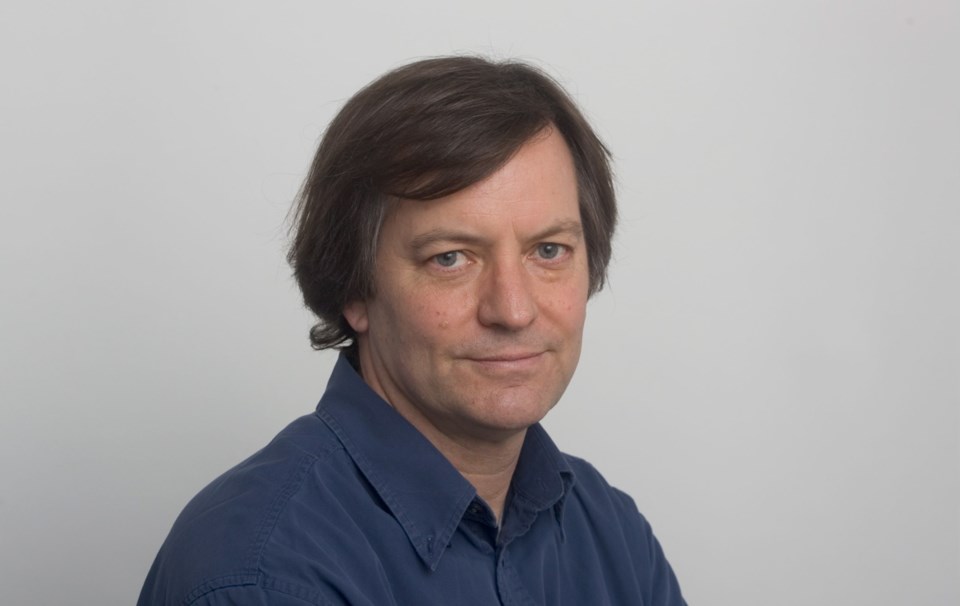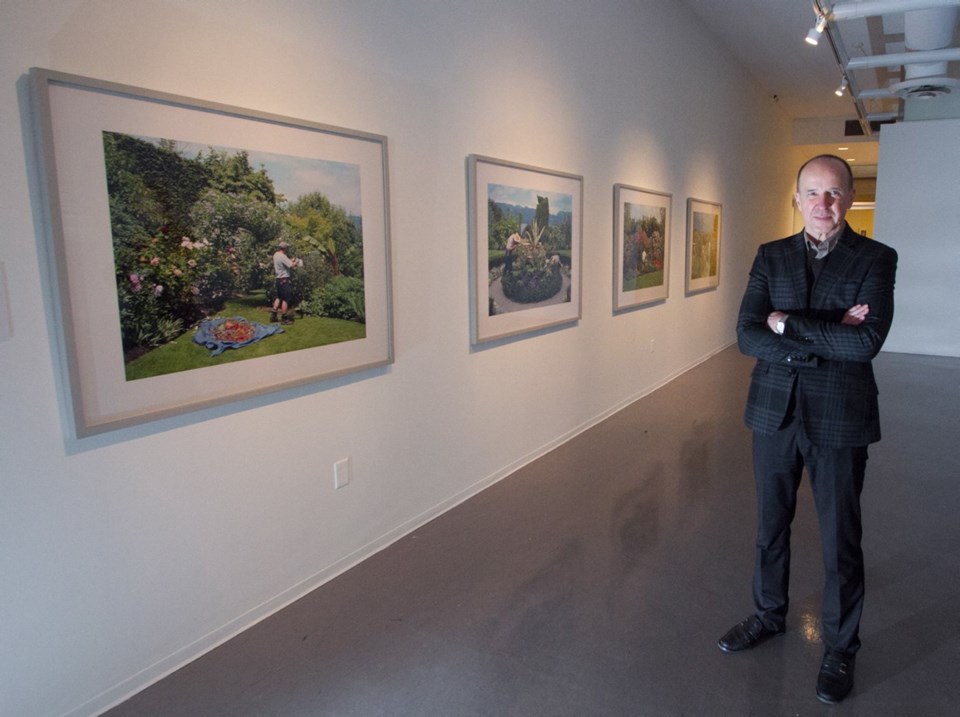 Jack Lohman meets Jon Tupper. Lohman is the vibrant CEO of the Royal ��ѻ��ý Museum and the ��ѻ��ý Provincial Archives. Tupper is director of the Art Gallery of Greater Victoria. Both men are eager and candid and have major projects ahead of them. Recently, Helen Marzoff, director of Open Space Gallery, chaired a discussion between the two, hosted at the regular monthly meeting of the Gallery Associates, volunteers at the Art Gallery of Greater Victoria.
Jack Lohman meets Jon Tupper. Lohman is the vibrant CEO of the Royal ��ѻ��ý Museum and the ��ѻ��ý Provincial Archives. Tupper is director of the Art Gallery of Greater Victoria. Both men are eager and candid and have major projects ahead of them. Recently, Helen Marzoff, director of Open Space Gallery, chaired a discussion between the two, hosted at the regular monthly meeting of the Gallery Associates, volunteers at the Art Gallery of Greater Victoria.
Lohman’s parents, both museum designers, arrived in London as refugees from Poland just after the Warsaw uprising. They arrived in time to design the Energy Pavilion for the Festival of Britain. Jon Tupper learned how to direct art museums “on the street,” first at a parallel gallery in Winnipeg called Plug-In and then in museums in Winnipeg, Banff and Charlottetown. He has been here a little over five years.
Building projects are on the agenda for both the AGGV and the RBCM. The RBCM is ��ѻ��ý’s largest museum. “The [Royal Ontario Museum] agreed,” Lohman assured us. “They have six million objects; I have seven million. And that’s before we factor in the 2.5 kilometres of [provincial] archives.”
Yet so much is “locked up in an ivory tower with very limited access,” he said. And it gets worse: “The objects are not well-stored, not well-looked-after by contemporary standards,” Lohman lamented. “We’re on a fault line, and it needs just a little tremor for that whopping great big carillon to go flying across Victoria and for the whole Fanin Tower to come pancaking down.”
He sees the need for some construction, but “it’s not about some whopping great big ego architect coming in and doing something outrageous.” He intends to build a globally recognized “brand” for the RBCM through properly curated exhibitions.
In the past, museums seemed to be places for solitary, silent research. At the Art Gallery of Greater Victoria, Tupper gives priority to the gallery as a social space. People drop in for social reasons or entertainment — and they may be educated and inspired in the process.
He’s planning new reception areas, meeting rooms and a more savvy technological environment. Tupper looks to libraries for inspiration.
“Now libraries have evolved into dynamic social spaces,” he said, and are embracing new technology. “Can’t get web access?” he asked rhetorically. “I’m sorry. You have to be technologically connected with everybody.”
People are using their phones to capture the artwork and get background about it. “They’re sending it and sharing it,” Tupper commented. The online conversation is much wider than the gallery. The audience drives the museum, and audiences are changing fast.
Lohman agreed. On a recent trip to Beijing, everybody was looking at art through their phones.
“They are using the phone as a means of capturing … With information you’ve got to save it, change it, mash it up; you want it fast, and you want it for free. We’ve got to find ways to use these tools to help people to look more closely, to slow down.”
Tupper says aboriginal contemporary art is having a huge impact on his audiences and curatorial practice, yet it’s not an easy sell to sponsors. The RBCM is about to open an exhibition on First Languages in June.
“These exhibitions are expensive and you have to find the money somewhere, so I went around to the banks and such,” Lohman reported, “and I found all the doors shut. But the corporations and banks and so on want to do business with the native people, because they’re another sector [of the market]. But they’re not willing to support it. So I’m still trying to unpack the reasons.”
He didn’t do much better when he asked for provincial support.
“I cannot understand why the minister responsible for aboriginal relations would not want to have its name associated with this exhibition. And I know they are interested … because now that the exhibition is announced and UNESCO is coming to hold their annual general meeting at the museum, suddenly the minister wants to do a photo call. [Laughter] And I’m saying: ‘Well, that photo call will cost you $200,000.’ [Laughter, applause.]”
Operating from his position of international power and prestige, Lohman doesn’t have to hold back.
“I haven’t got something to lose. I have had very frank conversations with ministers, and I couldn’t care less,” he said. “It may come across as very arrogant, but perhaps it was that attitude which prevented our organization from being chopped last year.”
Faced with yet another round of cuts, Lohman fired off a “livid diatribe,” a 12-page letter showing the government’s record over the past years. “Cutting, cutting, cutting, cutting,” he chanted. “I told them we’re at the stage where you can choose — museum or archives. Which would you like me to shut? As a Category A museum, the only thing we can do is send our collections to the nearest other Category A museum, which is the Glenbow in Alberta.” In the face of that, they didn’t make all the cuts.
There is plenty of good news. The work of the museum’s curators, “the hidden treasure” according to Lohman, will soon result in a special exhibit on the gold rushes in British Columbia. Emily Carr’s work is being prepared for shows at the Dulwich Gallery in London and in Suchou, China. Over at the AGGV, Tupper keeps up a steady stream of in-house exhibits from the vast collection, and schedules many contemporary events.
With building projects on their minds, these two men know that the work of raising millions of dollars for culture is a job that is endless. They are working for our benefit.



